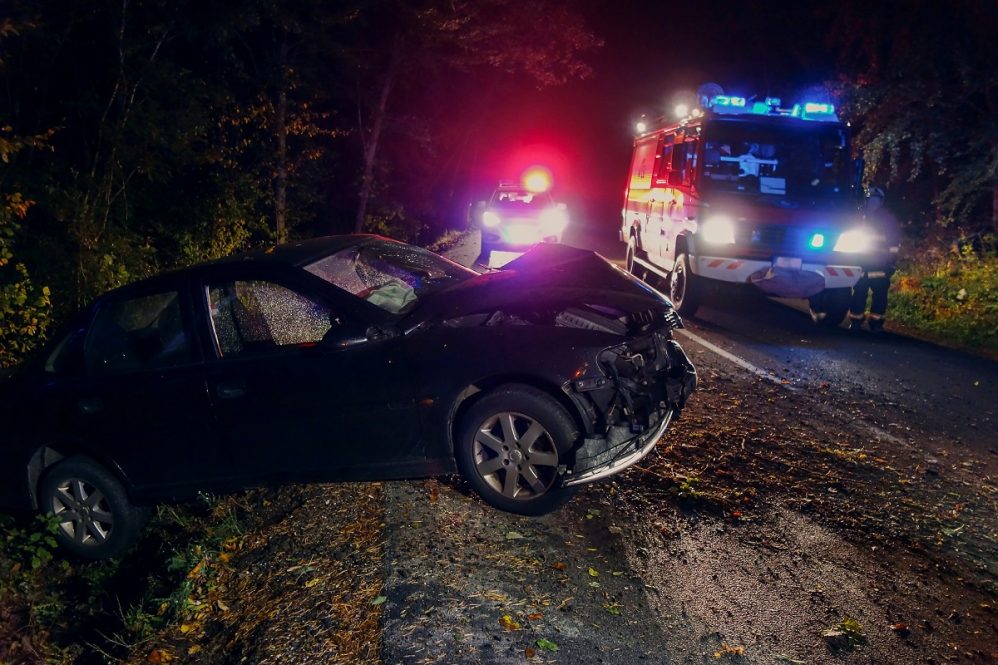Although there are fewer cars on America’s roads since the pandemic began, the number of fatal car crashes has increased.
Early nationwide data supports this counterintuitive finding: Although daily trips from households fell by as much as 35% in 2020, preliminary traffic fatality count data for the first nine months of 2020 shows 28,190 people died in motor vehicle traffic crashes – a 4.6% increase compared with the same period in 2019. The same trend has been reported in countries outside the U.S., such as Australia, where less traffic has not produced fewer road deaths.
Curious about traffic crashes during the pandemic, we decided to use our skills as a social scientist and a research engineer who study vehicle crash data to see what we could learn about Connecticut’s traffic deaths when the stay-at-home orders first went into place last March.
A partnership between the Department of Transportation, local hospitals and the University of Connecticut discovered what many people intuitively knew: Traffic volume and multivehicle crashes fell significantly during the stay-at-home order. Statewide, daily vehicle traffic fell by 43% during the stay-at-home order compared to earlier in the year, while mean daily counts of multivehicle crashes decreased from 209 before the stay-at-home order to 80 during lockdown.
What was unexpected, however, was the significant increase in single-vehicle crashes, especially fatal ones. During the stay-at-home period, the incidence rate of fatal single-vehicle crashes increased 4.1 times, while the rate of total single-vehicle crashes was also up significantly.
Data about all crash types in the state, whether single- or multivehicle, tell a similar story. Although preliminary, police reports have placed the 2020 year-end total for traffic deaths at 308, a 24% increase from 2019.
It is unclear exactly why this is happening, but we are using data to investigate a few theories.
Data show that drivers are more likely to be speeding. Although traffic volume on Route 15 and Interstate 95 in Connecticut fell 52% in April 2020, the number of vehicles going more than 80 mph increased by 94%. Other states are seeing the same trends.
Drivers also appear to be very distracted. Data collected by Zendrive, a company that tracks smartphone data to predict drivers’ behavior, shows that in 57% of crashes nationwide in 2020, drivers were on their phones. From January (pre-lockdown) to March 2020, drivers in crashes spent 7% more time on their phones; when that data collection was extended to November, drivers checked their phones 17% more often. These trends are also holding up in other countries.
American drivers are also being riskier on the road: According to the National Highway Traffic Safety Administration, the percentage of injured road users – drivers, pedestrians, bicyclists – with alcohol, marijuana or opioids in their system all increased during the pandemic.
Any death during COVID-19 – whether it’s the direct result of the virus or its indirect effects on daily life – is a tragedy. Yet there are ways to keep drivers safe during this tumultuous period.
Check Your Speed
Fewer drivers does not make speeding less dangerous. In 2010, more than one-third of fatal crashes took place on local rural roads that tend to have relatively few cars – and nearly one-third of those crashes involved speeding.
In normal conditions, drivers often “go with the flow” of traffic, matching the speed of other cars. Without other cars around, it may be easy to unconsciously go much faster. Frequent speedometer checks can help combat this.
Setting cruise control to the speed limit – or, at most, five mph above – will lock in your speed and save you from having to check the speedometer.
Don’t Drive Angry
In addition, if you’re upset, try to avoid getting behind the wheel. The COVID-19 pandemic has left many feeling isolated, agitated or simply bored – but people who are feeling aggressive or angry are more likely to engage in unsafe driving. If you’re in a heightened emotional state, ask a friend or family member to drive, use public transit or ride-sharing services, take a walk, ride a bike or simply stay home.
Last, stay focused. With fewer vehicles on the road, it may also seem safer than usual to sneak a peek at your phone. That’s not the case, as the rise in phone use and fatal crashes during 2020 illustrates. To reduce the temptation of checking your phone, many free apps, such as Drivemode and Android Auto, simplify phone functions like GPS and music to minimize distractions.
Originally published in The Conversation.



